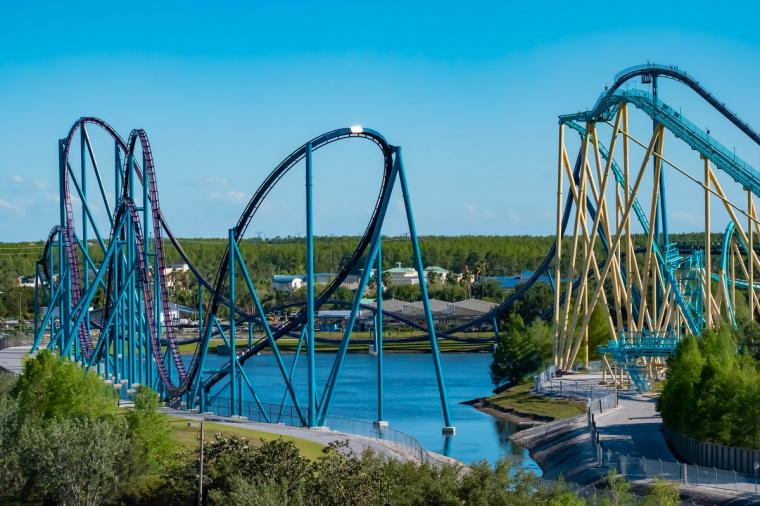
It was perhaps appropriate that a bombshell piece of news about a familiar name in theme parks landed on July 4. Six Flags, say reports, is headed for financial trouble.
Information carried in several sources noted that Six Flags Entertainment, which operates 27 parks across North America, is characterized as a “debt-heavy business,” since it has historically relied on debt financing to invest in capital projects like new rides at its properties, and the cash flow constraints during the pandemic made its leverage more severe.
And while a nationwide recession may or may not happen, it is worth noting that theme parks are considered consumer discretionary, meaning they are viewed by families as non-essential expenditures typically cut in a bad economy. It is worth noting that Six Flags Entertainment went bankrupt in 2009 (following the 2007 recession) after struggling to refinance $2.4 billion in debt.
While this is unlikely to make a visible difference to youth athletes who are visiting a Six Flags in the area where they are competing, there have been some changes to the park’s pricing structure itself. Back in mid-May, Yahoo! News noted that Six Flags had done away with its unlimited dining pass after a series of videos appeared in the past few months on TikTok, showing people how to take advantage of the feature and obtain thousands of dollars’ worth of food; this ultimately cost the company money and resulted in clogged lines at food service locations, generating complaints from customers.
Some good news for patrons of Six Flags, however, is that the parks will be increasing accessibility for all guests, including debuting new harnesses in roller coasters for guests with limited mobility, as well as becoming a Certified Autism Center, making it more accessible to those with sensory processing issues.
Vice president for public safety and risk management, Jason Freeman noted, “Six Flags is synonymous with thrills, but safety and inclusivity is the cornerstone of everything we do. We are proud to implement these key, new safety programs that bring thrills within reach for all guests.”
But while Six Flags battens down the hatches to deal with its financial headwinds, the outlook for other theme parks, amusements and water parks is better.

HospitalityNet, for example, noted in April that attendance was returning to pre-pandemic levels at waterparks. 2022 is expected to bring a number of expansions and new developments, including some large-scale projects. A number of larger developments are planned for 2023 and beyond at waterparks and surf parks throughout North America. (There are challenges, however; increases in wages and the labor shortage, as a shortage of lifeguards has been an ongoing problem, will both impact operations in 2022).
At theme parks, well, the site Blooloop had the best headline: “Theme Parks Poised to Bounce Back.” The reporter listed individuals entertainment corporations, including Cedar Fair, SeaWorld Entertainment, Universal Studios and the Walt Disney Company, among others, and examined business forecasts. Overall, results were promising, Blooloop noted:
“Across the board, the early performance results are fairly consistent. Virtually every property is either seeing early rises in revenue or rises in advance ticket and season pass sales or is anticipating higher than normal attendance levels. This is alongside what seems to be a clear pent-up guest demand for the theme park experience.
If guests leave satisfied, this means that they are more likely to plan a return visit in the future. As a result, the future could be bright indeed for years to come. But if guests encounter too many difficulties, such as overcrowded parks mixed with understaffing issues and higher than expected costs, they may leave feeling frustrated with the experience, and may not be as likely to return quite so quickly.”
The bounceback of theme parks, water parks and similar attractions has been studied in-depth by researchers, even becoming the subject of white papers and reports.
The importance of having attractions that can be visited by youth athletes has been cited by numerous event owners as being a key factor in choosing sites for tournaments. Attractions (one example is theme parks) can encourage families to spend extra time in a city and increases the economic impact of the event overall.

